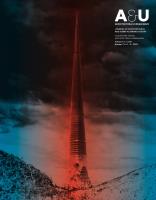
Analyzing contemporary image of the Olympic city Sarajevo: Modalities, Meanings and Negotiations
Analyzing contemporary image of the Olympic city Sarajevo: Modalities, Meanings and Negotiations
Keywords: city branding; identity of Olympic city; city image; signs and symbols in the city; Sarajevo 1984
This work examines the visual identity of the city of Sarajevo, the host city of the XIV Winter Olympic Games 1984. It aims to question the role of the Olympic signs and symbols today, which do not solely exist as just visual interpretations but are set in the context of meaning – systems in a contested environment of post-Olympic, post-war, and divided city . By doing so, it looks closely at the concept of the Olympic city as a constructed visual identity, with particular emphasis on the analysis of the (in)consistency of the constructed city’s image in the period after the Games. It puts focus on the Olympic Games, not just as a large-scale, cross-cultural event, but also as a visual event and experience, where there is a wealth of information to be explored by evaluating its “visuality” and outlining the numerous ways in which the vision is formed. Applying the central contention that all signs and symbols have the potential to make some meanings available and rule out others, this work identified a set of factors that determine Sarajevo’s image. This leads us to the conclusion that an immense effort is being put into conceptually creating and aesthetically communicating the host city’s desired visual identity. To comprehend today’s image of Sarajevo as an Olympic city one must gain insight into the complex realities of national identity, the economy, and political and cultural influences.
More...
